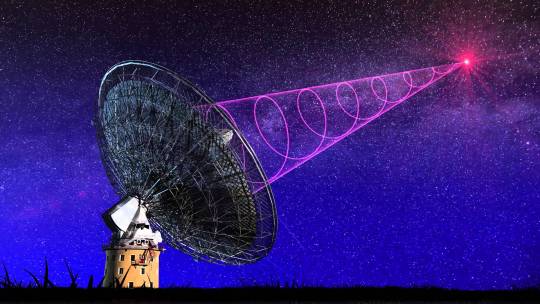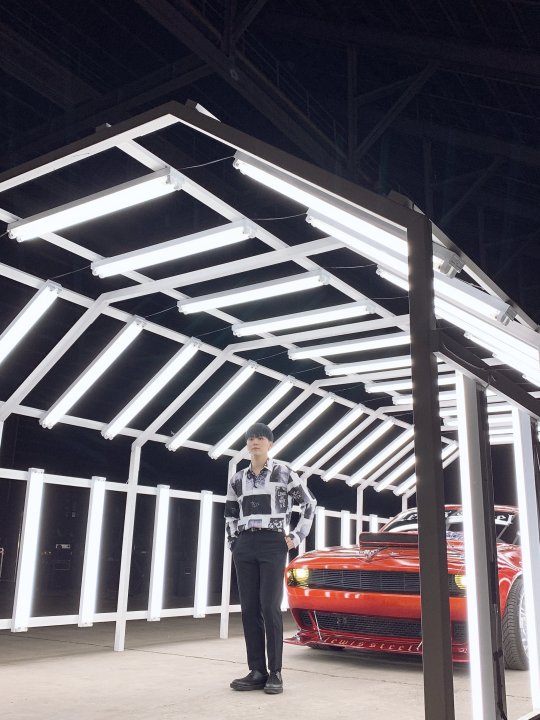#190520
Photo


190520 Lovelyz Yoo Jiae and Ryu Sujeong
at Once Upon A Time Showcase
© 시작하는사랑
do not edit, crop, or remove the watermark
4 notes
·
View notes
Text

[190520] Seventeen Twitter Update:
[17'S] 🌹사랑하는 캐럿들💎 성년의 날 축하해🌹
trans: 🌹beloved carats💎 happy coming of age day🌹
#wonwoo#jeon wonwoo#seventeen#photo#twitter#ft. scoups#ft. mingyu#ft. vernon#190520#2019#my translations
6 notes
·
View notes
Text

[190520] SEVENTEEN_OFFICIAL Weibo Update:
#饭心直达表白季#
谢谢你们的支持和喜爱!
translation:
#heartfeltconfessionseason
thank you for your support and love!
#minghao#xu minghao#the8#myungho#seventeen#photo#weibo#ft. hoshi#ft. jun#ft. dino#190520#2019#my translations
4 notes
·
View notes
Photo


© BRIGHT FAIRY🧚♂️ | do not edit and/or crop logo
24 notes
·
View notes
Photo



20.05.2019 Weibo de Seventeen
2 notes
·
View notes
Text



190520 gyuram88 update
0 notes
Text


⤅ Eternal Flame . do not edit or logo crop
(HQ: 1 - 2)
1 note
·
View note
Photo

190520 Kwon Eunbi
at Incheon International Airport
© captain rabbit
do not edit, crop, or remove the watermark
0 notes
Photo

© milky snow
1 note
·
View note
Photo

Physiology laboratory in Biology Building, The University of Iowa, 1905
Creator: unknown
https://digital.lib.uiowa.edu/islandora/object/ui%3Aictcs_14084
#Physiology Laboratory#Laboratories#Light Bulbs#Tables#Biology Building#The University of Iowa#frb 190520
7 notes
·
View notes
Text









190520 OKIDOKI weibo update
21 notes
·
View notes
Text
Made a piccrew of Jas

Works well if you have beastkin ocs
37 notes
·
View notes
Photo

Newly discovered Fast Radio Burst 190520 prompts more questions due to strange behavior Newly discovered fast radio burst (FRB) 190520 shows unique behavior compared to other FRBs discovered so far. This deviant cosmic burst was observed by an international team, co-led by researchers at West Virginia University and the Center for Gravitational Waves and Cosmology. Just when you think you understand the pattern, a strange outlier comes along and forces you to re-evaluate all that you know. Professor Sarah Burke-Spolaor along with Graduate Assistant Kshitij Aggarwal, both of the WVU Department of Physics and Astronomy and the Center for Gravitational Waves and Cosmology, published their findings in Nature. In the paper, they describe observing the unique behavior of the fast radio burst called FRB 190520. Additionally, West Virginia University Graduate Students Jessica Sydnor and Reshma Thomas both played critical roles in the discovery. Thomas worked closely with Burke-Spolaor to obtain follow-up data on the FRB to better understand some of the interesting properties found by the initial discovery. Snyder aided Burke-Spolaor in imaging and image interpretation to cross check results seen by the FAST collaborators. The odd one FRBs are transient radio pulses caused by astrophysical sources located well beyond our galaxy, the Milky Way. While the origins of these millisecond duration, bright, extragalactic flashes are still not fully understood, researchers are closing in on the mystery with each new discovery. This FRB, FRB 190520, proved to be unique enough to be considered an outlier among all known FRBs. First, it was classified as a repeater. A repeater is an FRB that repeats its pulses randomly. Typically, FRBs are unpredictable, but repeaters are more reliable but are also rare. With repeating behaviors, researchers can better focus and observe the data with relative precision and map out repeating bursts which assists in future observations. FRB 190520 is one of the most active repeating FRBs to ever be observed. Furthermore, this is only the second localized FRB, out of over 20 localized FRBs, with a persistent radio source associated with it. Localization is when an FRB location is pinpointed to a very small area in space, connecting the FRB to a host galaxy near that location. Observations of host galaxy of FRB 190520 showed that it is much closer than expected. Overall, it was behaving very differently than other FRBs, prompting more questions from the team. Why was this one different? What was making it behave differently? Is the behavior due to the actual FRB itself, or its host galaxy? Could this host galaxy give astronomers more clues which could fill in more pieces of the cosmology puzzle? Let’s begin to understand how the discovery unfolded. The first FRB was discovered in 2007 by West Virginia University Professor Duncan Lorimer, Professor Maura McLaughlin, and an undergraduate student working with Lorimer, D. Narkevic, while analyzing archival data recorded by the Parkes Observatory. This burst was originally dubbed the Lorimer Burst. This discovery opened the doors for a whole field of study around FRBs. FRB 190520 was discovered by researchers using the FAST (Five-hundred-meter Aperture Spherical radio Telescope) in 2019. In 2020, a team of researchers observed FRB 190520 using the VLA (Karl G. Jansky Very Large Array) observatory and found remarkable characteristics, very unique to this particular FRB. Fast forward 14 years, FRB 190520 sparks a host of new questions. How do you know the location of an FRB? Quite like the Doppler effect, astronomers use what is called redshift, or the wavelength of the light that is stretched as sound waves move through space. Much like the sound an ambulance makes; it changes and peaks in pitch as it moves towards you and then drops in pitch as it moves away from you. Light waves move similarly. The light drifts towards the red side of the spectrum for objects that are far away and moving away from us and allows astronomers to measure and calculate the speed of a galaxy relative to Earth. Combining all that they knew about the FRB, the team used the Realfast observing system at VLA to observe and collect data where they detected a persistent radio source (PRS) colocated with FRB 190520. Using the position of the FRB with realfast, the team searched for the host galaxy and identified the host galaxy, a dwarf galaxy, at distance of ~0.2. The team isn’t sure whether the PRS is related to the FRB, or something near the FRB in its environment. Many theories around both scenarios exist. This is the beginning of a better understanding of repeaters that are also co-localized. Trip Calculations using Dispersion Measure Plasma occupying the “empty” space between stars and galaxies actually cause light to slow down, and this effect becomes more extreme at lower radio frequencies. This causes high-radio-frequency signals to arrive first and low-radio-frequency signals to arrive later, causing FRBs to demonstrate a descending “whistle” in the data. The duration of that descending tone can be used to calculate the amount of gas and matter it has passed through, giving them an idea of how far it originated from.The Dispersion Measure (DM) gives us a lot of information about our universe because it tells us about the electron distribution out in space. As the pulses from an FRB far away move through matter, like gas and plasma within the universe, the sounds of the pulses are bouncing off of electrons within the intergalactic medium (outside our own galaxy) causing changes in the pulse. Astronomers can calculate the dispersion within the Milky Way, our own Galaxy. Beyond the Milky Way, dispersion in the intergalactic medium is unknown, so researchers need to fill in the blanks with calculated estimates. There may be lots of matter hiding within the intergalactic medium; another puzzle for another day. DM of FRB 190520 When calculating its dispersion measure, the team discovered it was very large. The dispersion measure (DM) is used to estimate how far the FRB could be, and based on the DM alone, it should have been very far away, but combined with the redshift, it wasn’t at all far away; just the opposite. It was very close. Based on existing observations using the redshift/DM relationship, characteristics of this FRB proved to be vastly unique, even an outlier. This breakthrough calculation now challenges the DM-redshift relations that are routinely used in FRB analysis to determine the distances to FRBs. The Outlier FRB 190520 again had to prove its uniqueness. Its DM was very large, which is typically used to estimate how far the FRB could be located. Based on the DM alone, it should've been very far, but the redshift proved otherwise. It was actually very close to Earth. If all FRBs behave the same way, then we can use them to serve as an average point. But if we have deviant FRBs, like FRB 190520, the averages aren’t as evenly presented. In other words, it could cause the known average to be wider due to the obvious outliers in the mix. According to Aggarwal, FRB 190520 could throw initial estimates and assumptions out the window. FRB 190520 is proving to be a portal of continuous unknowns. This outlier and its host galaxy has now opened more questions around the cosmic world of FRBs, intriguing researchers with more scientific curiosity. Researchers have used these FRBs to draw important conclusions around other areas of research pertaining to the universe, like its evolution. “If you count up all the stars, gas, and other luminous things we can see, based on cosmological observations, there should be more missing matter accounted for, but we don’t fully have those direct measurements,” Burke Spolaor explains. FRBs can probe the space between galaxies, helping to fill in those unknown details about the intergalactic medium including the hidden matter. Something is going on with FRB 190520, and we want to know more! The host galaxy, or the environment around this FRB has something unique going on, which could contribute to such a high dispersion. Localization is the key to better understanding outliers like FRB 190520, by pinpointing the FRB to its parent galaxy and estimating its exact distance. With every discovery, the puzzle becomes more complex, offering more answers to questions pertaining to the evolution of the universe and beyond. While currently an anomaly, it's quite possible that in five or ten years, it could be considered normal as more details around repeating FRBs, like FRB 190520, are uncovered.
2 notes
·
View notes
Photo


20.05.2019 Twitter
1 note
·
View note
Text

The flower
📚Sakura Card Captor
190520
#2019#the flower#manga#manga panel#sakura#sakura card captor#libro#the saddest god#the-saddest-god#The_saddest_god
0 notes
